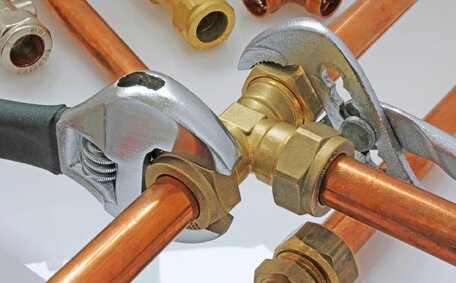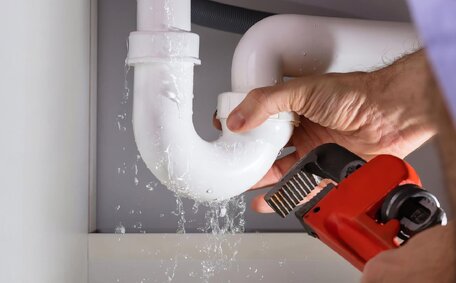Maintaining the Proper Hot Water Temperature
Ensuring your hot water system maintains a safe temperature is crucial for preventing bacterial growth and scalding hazards. The Plumbing Code of Australia mandates that hot water should be stored above 60°C to stop bacteria from multiplying. However, water heated higher than 50°C can cause third-degree burns in just 5 seconds.
This is why installing a tempering valve is so important.
The tempering valve mixes cold water in to reduce the temperature to a safe level below 50°C before it leaves the tank. Check your system annually and use a thermometer to test water from taps to ensure it falls within the safe zone.
For homes with children, the elderly or disabled, the recommended temperature is even lower at 43-46°C to prevent accidental scalding.
If temperatures are consistently higher than 50°C, a licenced plumber can adjust your thermostat down and fit a tempering valve if you don’t already have one.
You should also flush your hot water system and inspect the sacrificial anode regularly. Failing to maintain safe temperatures puts your family at risk of burns and allows bacteria to multiply.
Setting the Thermostat to 120°F/50°C
To avoid scalding and decrease energy bills, you should set your hot water system’s thermostat to 120°F or 50°C.
Locate the thermostat on the front of your gas or electric tank. Slowly turn it down checking with a thermometer until the temperature reaches 120°F/50°C. This provides comfortably hot water while reducing risks.
Setting the thermostat lower has benefits beyond safety. For electric storage tanks, expect 10-25% off your annual water heating costs.
For a gas system, your yearly energy savings from reducing the temperature by 20°F could be 8-22%. With rising energy prices, adjusting the thermostat is one of the simplest ways to achieve savings.
Test your tap water after changing the temperature using a digital thermometer. Water from the bathroom and kitchen taps should ideally read 43-46°C for an added margin of protection against scalds. If it is still above 50°C, contact a licenced plumber to install a tempering valve.
Installing a Tempering Valve
Installing a tempering valve is recommended to blend hot tank water with cold water to reduce the temperature to a safe level. This valve should be fitted by a qualified plumber on the hot water line coming out of the storage tank before it reaches any taps.
The tempering valve ensures a constant, controlled flow of water at around 50°C to avoid scalding anyone using the hot water taps. It mixes a portion of cold water in to bring the hot water down from the dangerously high 60-80°C range inside the tank.
A correctly adjusted tempering valve reacts automatically if the hot water temperature rises. More cold water will mix in to maintain a consistent 50°C output temperature. This provides crucial protection for anyone using sinks, showers or baths in the home.
Without a tempering valve, there is a serious scald risk if someone turns on a hot tap without checking the temperature first. Families with elderly relatives or young children should consider installing one for added peace of mind.
Draining and Flushing the Water Heater
Draining and flushing your hot water heater helps extend its lifespan by removing sediment that builds up over time. This should be done annually as part of routine water heater maintenance.
Start by turning off the power or gas supply to the tank and shutting off the cold water intake valve. Connect a garden hose to the drain valve at the bottom of the tank. Place the other end of the hose in a drain or outside area.
Open the pressure relief valve at the top of the tank. Then open the drain valve and allow the tank to fully empty. Once drained, close the drain valve and refill the tank by turning the cold water back on.
While refilled, open the drain valve again to flush sediment out until the water runs clear. Afterwards, close all valves and turn power/gas back on. Finally, check the temperature gauge to ensure the hot water heater reheats to the correct temp.
Flushing annually keeps your heater working efficiently by cleaning out minerals from hard water and sediment that can build up inside the tank. If you have very hard water, consider bi-annual flushing.
Replacing Old or Faulty Equipment
There are a few signs that your hot water system needs replacing. If your hot water runs out quickly or you have to wait longer for it to reheat, the heating element may be worn out. Discoloured or rusty water, rumbling noises, and leaks also indicate ageing equipment.
Replacing faulty parts can help, but if your system is over 10 years old, it may be time for a whole new unit. The latest energy efficient models heat water faster and can save up to 30% on your energy bills.
A new thermostat and heating element will give you better temperature control. New equipment paired with adjusting the thermostat down to 50°C gives you the optimal balance of efficiency, safety and savings.
While seemingly expensive, replacing an old inefficient system pays for itself within a few years due to lower running costs. For the safest hot water and peace of mind, talk to a plumber about replacement options if your system shows any warning signs.
Using Child-Safe Faucets and Showerheads
Installing child-safe faucets and showerheads can help prevent accidental scalding. These fixtures limit the maximum hot water temperature at the outlet to around 43-46°C, providing an extra layer of protection.
With standard fixtures, children can potentially turn on hot taps and get burned if the water temperature is too high. Child-safe products have inbuilt flow restrictors that mix cold water in to bring the temperature down to a safer level.
Look for showerheads and sink/bath faucets designed specifically for families with young children under 5 years old. Opt for thermostatic mixers that automatically blend hot and cold water to consistently stay below 50°C.
Child-safe fixtures provide peace of mind that your kids will be protected from hot water scalds even when unsupervised in the bathroom briefly. For any households with toddlers or infants, these fixtures are highly recommended as an added safety measure.
Educating Family Members on Scald Dangers
p>p>p>p>p>p>p>
Testing Water Temperature Regularly
To ensure your hot water system maintains a safe temperature, you should test the water temperature coming out of your taps on a regular basis. Invest in a digital thermometer and check temperatures at least once a month.
Run the hot tap first thing in the morning before any water has been used. Place the thermometer under the tap and allow it to stabilise. The temperature should be 43-46°C for optimal safety.
Also test again after the tank has heated up water throughout the day. The temperature may be higher in the afternoon. Consistently record your results.
If temperatures are reading above 50°C, take steps to lower the thermostat or install a tempering valve. Regular testing is the only way to monitor if your system is functioning properly and hot water poses no scald risk.
Having a Plumber Inspect Annually
p>p>p>p>p>p>p>p>






